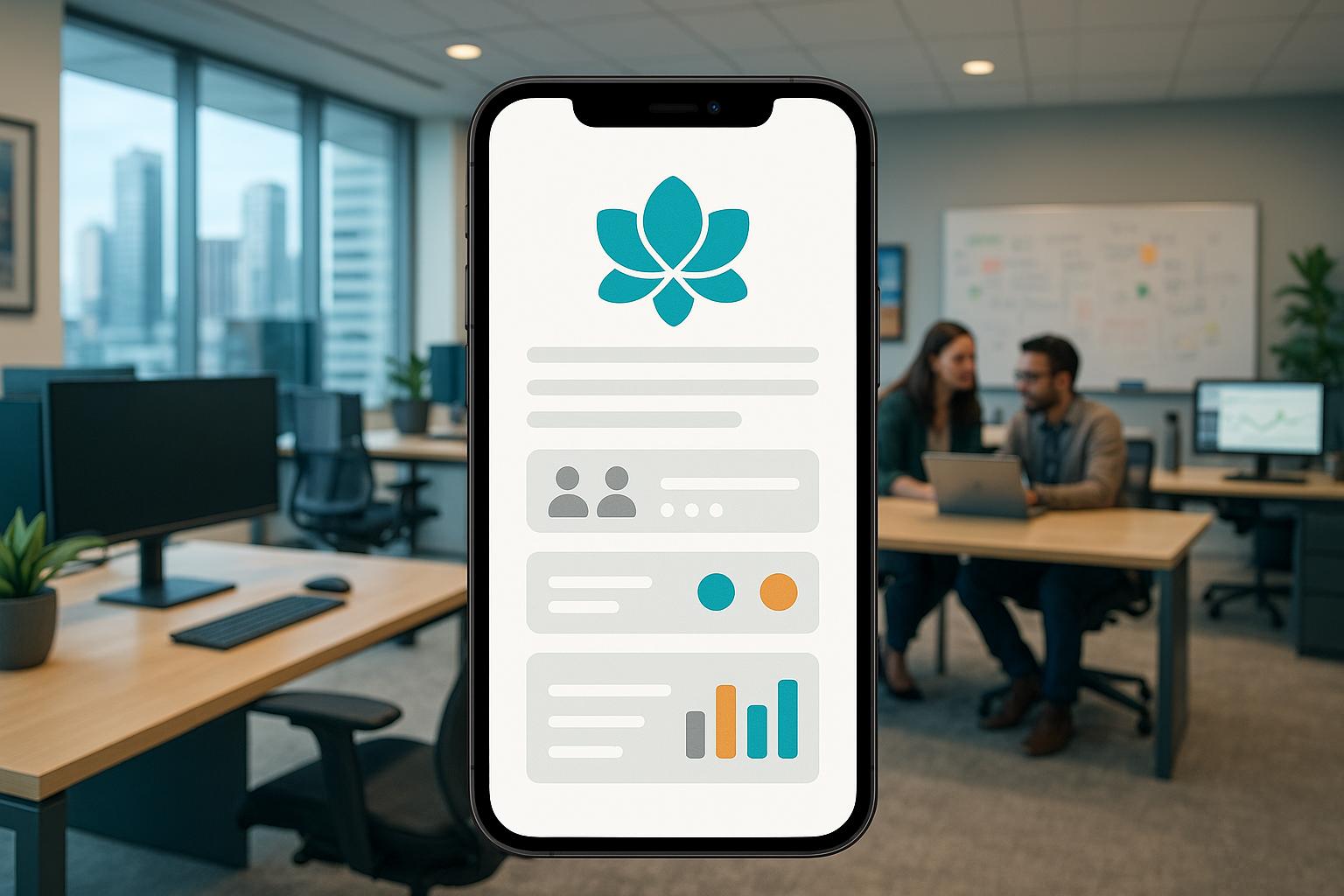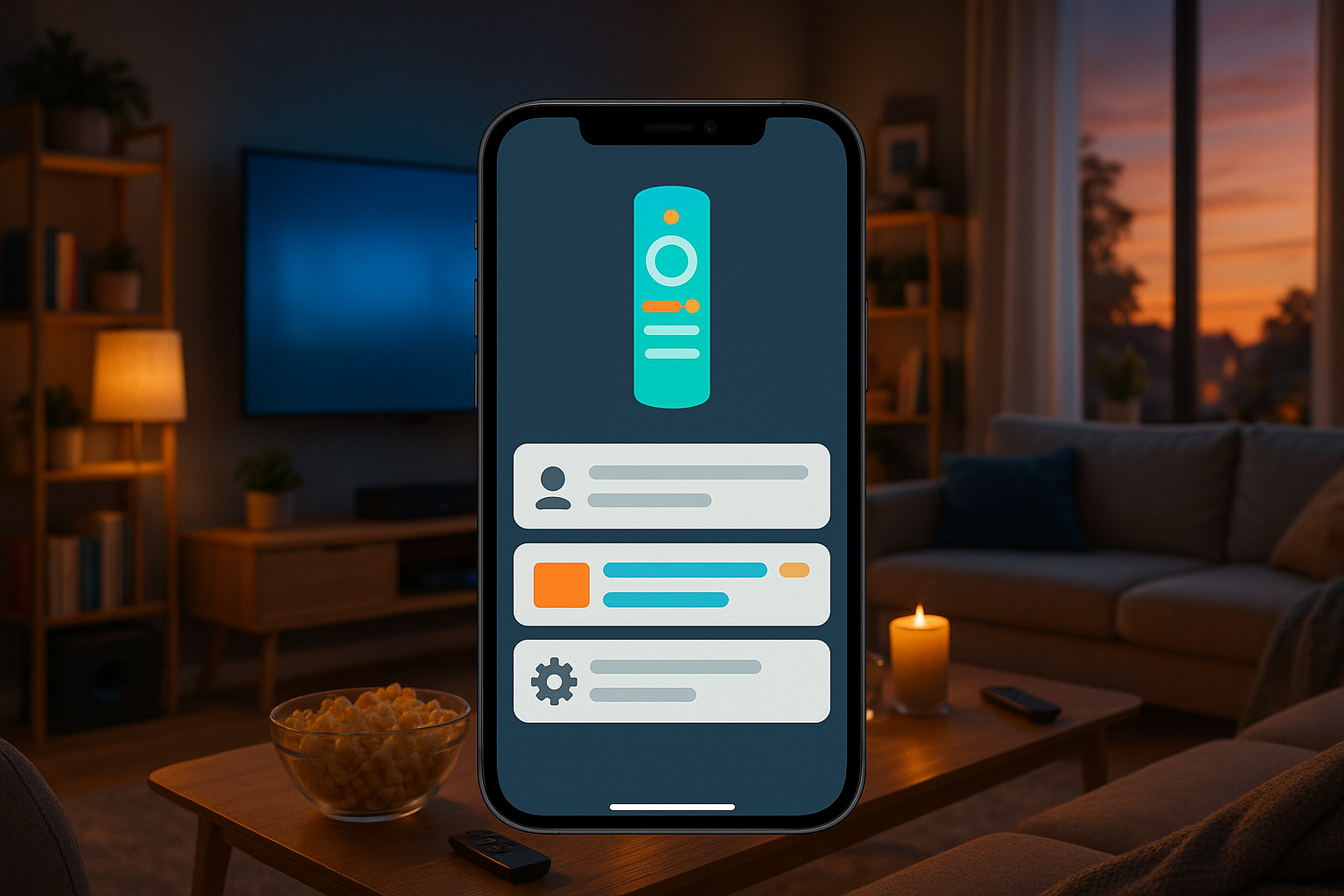Introduction
In today’s enterprise landscape, delivering a modern, intuitive user experience for complex business processes is no longer a luxury—it’s a necessity. SAP Fiori promises to bridge this gap, offering a simplified, role-based user experience for SAP software. However, the path from concept to a fully functional Fiori application is often fraught with unexpected complexity, technical hurdles, and spiraling costs. Many businesses embark on in-house Fiori development only to find themselves struggling with a rapidly evolving technology stack, intricate integration points, and a constant cycle of testing and retraining.
This article serves as a comprehensive guide to understanding the world of SAP Fiori app development. We will dissect what a Fiori app truly is, explore the significant challenges that make in-house development so difficult, detail the different types of Fiori applications you can build, and shed light on the real cost factors that every procurement team should know.
Furthermore, we will discuss the landscape of Fiori development companies and explain why partnering with a seasoned expert is often the most strategic path forward. As a top US AI-powered mobile app development firm, we at MetaCTO have guided numerous businesses through the complexities of enterprise application development. We will share our insights on navigating Fiori’s challenges, particularly in the demanding context of mobile integration, and demonstrate how an expert partner can transform a potentially frustrating project into a resounding success.
What is an SAP Fiori App?
At its core, SAP Fiori is a design system that brings a consumer-grade user experience (UX) to enterprise software. It represents a fundamental shift from transaction-code-based interactions to a modern, role-based, and device-agnostic interface. An SAP Fiori app is not a single technology but rather a user-facing application built following these design principles.
All SAP Fiori apps, regardless of their specific function, share a common technical foundation. They are built using SAPUI5, a comprehensive HTML5 and JavaScript UI library, and connect to the back-end SAP systems through SAP Gateway, which exposes business logic and data as OData services.
Developers have two primary methods for creating these applications:
- Direct Implementation: Developers can write the application from the ground up by implementing JavaScript code directly. This offers maximum flexibility for highly customized or unique requirements.
- SAP Fiori Elements: For more standardized scenarios, developers can use SAP Fiori elements. This is a powerful, metadata-driven approach where the complete user interface is generated at runtime based on metadata annotations. These annotations can be defined in SAPUI5, SAP Gateway, or Core Data Services (CDS) views, dramatically accelerating development for common application patterns like:
- List Report: Enables users to view, filter, and work with a large set of items in a table format.
- Object Page: Provides a central place to view, edit, and create business objects.
- Overview Page: Visualizes large amounts of data on a single page using a card-based layout, where each card can present different types of content.
- Analytical List Page: Combines transactional capabilities with analytical charts and visualizations, allowing users to identify relevant data sets and instances.
- Worklist: Displays a collection of items that a user needs to process, such as approvals or pending tasks.
A key aspect of the Fiori experience is its ability to unify new and old. Fiori is not just about brand-new apps; it’s also about bringing existing, powerful SAP functionalities into a modern context. Classic applications that existed long before Fiori, such as traditional ABAP transactions, Web Dynpro ABAP, and WebClient UI Framework applications, can be integrated directly into the SAP Fiori launchpad. Since the introduction of SAP Fiori 2.0 and the SAP Belize theme, these classic applications are considered an official part of the Fiori UX, allowing customers to curate a launchpad that includes both modern Fiori apps and essential legacy transactions.
Reasons It Is Difficult to Develop a Fiori App In-House
While the promise of a simplified user experience is alluring, the reality of developing Fiori apps in-house can be deceptively complex. Businesses often underestimate the unique set of challenges that can strain internal IT resources, delay project timelines, and inflate budgets. These difficulties typically fall into three main categories: the relentless pace of change, the underlying technological complexity, and the specific hurdles of mobile integration.
The Ever-Changing Landscape
One of the most significant challenges developers face is the rapid and continuous evolution of the Fiori platform itself.
- Frequent Updates: SAP releases a new version of Fiori every year, containing both minor and major changes. This constant stream of updates creates a perpetual learning curve. By the time a development team gains proficiency and a solid hold over the platform’s functionality, a new version is released, forcing them to adapt once again.
- Increased Testing Burden: Every new version release introduces a significant testing and implementation burden. Testing, an already tedious and resource-intensive process, must be performed continuously to ensure that existing custom applications are compatible with the newer Fiori version. This reactive cycle consumes valuable developer time that could be spent on innovation.
- Version Control Challenges: For developers, the frequent releases make version control a huge challenge. They must constantly run compatibility tests and manage different versions across development, quality assurance, and production environments, adding a layer of operational complexity to the entire software development lifecycle.
- Training Overhead: Even minor changes in a new version can require businesses to retrain staff to make the most of them. This ongoing need for training and documentation further taxes the organization’s resources.
Inherent Technological Complexity
The statement that Fiori is “not one technology but a blend of many” is at the heart of its development challenges. The entire infrastructure is a complex ecosystem of interconnected components that requires a broad and deep skill set to master.
- A Medley of Technologies: A Fiori environment can include SAPUI5 for the front-end, classic Web Dynpro apps for SAP S/4HANA, and SAP GUI for HTML apps, all coexisting within the Fiori launchpad. Add SAP Gateway for OData services, CDS views for data modeling, and potentially SAP Business Technology Platform (BTP) services, and the complexity multiplies.
- High Bar for Competency: Businesses with little in-house technical competency will have trouble navigating this complex ecosystem. To fully utilize each integration and troubleshoot issues effectively requires expertise across this wide range of SAP technologies. Without this deep knowledge, teams can struggle to get out of the “complex ecosystem” and may fail to utilize the platform in full swing.
The Mobile Integration Hurdle
Extending Fiori applications to mobile devices introduces a host of specific, often frustrating, technical challenges that can derail a project. While Fiori is designed to be responsive, creating a seamless and robust custom mobile experience is far from straightforward. The issues encountered when testing custom themes and apps on mobile devices like an iPhone highlight the need for specialized mobile expertise:
- Broken UI/UX Elements: Developers frequently report critical UI components simply not working as expected. For instance, after a user opens an app from a tile, the Home Icon might disappear from the header, preventing easy navigation. Similarly, a fundamental feature like the SignOut button may become non-functional.
- Inconsistent Component Behavior: Custom apps can exhibit bizarre behavior on mobile, such as POP-UP buttons failing to display their ‘Yes’ and ‘No’ text, leaving the user unable to make a choice.
- Branding and Theming Issues: Even basic branding can fail, with the company logo disappearing when the custom theme is rendered on a mobile device.
These are not minor cosmetic glitches; they are fundamental usability failures that render an application unprofessional and difficult to use. They underscore a critical point: Fiori development, when extended to custom mobile apps, requires more than just SAP knowledge. It demands a deep understanding of mobile-specific development practices, platform-specific behaviors (iOS vs. Android), and the nuances of creating a user experience that feels native and intuitive. This is precisely where a generalist in-house team can struggle and where a specialized mobile app development agency provides immense value.
Different Types of Fiori Apps
SAP Fiori applications are not a one-size-fits-all solution. They are categorized into three distinct types, each designed for a specific purpose and built on a particular technical foundation. Understanding these types is crucial for planning a Fiori implementation and selecting the right apps for your business needs.
Transactional Apps
Transactional apps are the workhorses of the Fiori ecosystem. They are designed to let users perform transactional tasks, such as creating a leave request, managing purchase orders, or approving quotations. These apps represent simplified views and interactions with existing business processes, making day-to-day tasks faster and more intuitive.
- Purpose: To execute business transactions and processes.
- Technology: They primarily use ABAP to provide the classic functions of a business system. Since they often represent simplified interfaces to existing transactions, this reliance on ABAP is a natural fit.
- Database Requirements: A key advantage of transactional apps is their flexibility. They generally run on any database, including non-HANA databases. The exception is for apps that are developed and shipped specifically with SAP S/4HANA, which may have dependencies on the HANA database.
- Availability: They are available for both SAP S/4HANA and the SAP Business Suite.
- Integration of Classic Apps: As mentioned earlier, transactional apps also encompass classic applications. Since SAP Fiori 2.0, SAP GUI transactions and Web Dynpro ABAP applications are considered an official part of the Fiori experience. This allows businesses to provide users with access to powerful legacy functions directly from the modern Fiori launchpad. It’s important to note, however, that these integrated classic apps are limited to those targeting end-users and available in S/4HANA 1610 or later.
Analytical Apps
Analytical apps leverage the power of the SAP HANA database to provide real-time, role-based insights into business operations. Instead of just processing transactions, these apps allow users to monitor key figures, analyze trends, and explore large volumes of data directly in their browser.
- Purpose: To provide deep insights into business data for monitoring and decision-making.
- Technology: These apps are built on the analytical capabilities of SAP HANA. They combine the data-crunching power of HANA with the interface components of SAP Business Suite or S/4HANA to deliver real-time information in a simplified front end.
- Database Requirements: Analytical apps have a strict dependency on the SAP HANA database.
- Availability: They are available for SAP S/4HANA and SAP Business Suite powered by SAP HANA.
- Key Use Cases:
- SAP Smart Business: This is a prominent category of analytical apps. It allows users to closely monitor their most important Key Performance Indicators (KPIs) in real time. This enables them to react immediately to changes in market conditions or operational performance.
- SAP Analytics Cloud (SAC) Integration: As the strategic analytics solution within SAP BTP, SAC offers advanced capabilities. Fiori apps based on SAC provide sophisticated analytics, business intelligence, and collaborative enterprise planning. Two primary types of SAC-based apps are shipped for SAP S/4HANA Cloud:
- Data Analyzer: An ad-hoc query tool for end-users to navigate, analyze, and filter data from various sources like SAC models, BW queries, and HANA live views.
- Story: A dashboard-style application where users can bring data and visualizations together to tell a compelling story about their business and discover hidden insights.
Fact Sheet Apps
Fact sheet apps are designed to provide a 360-degree view of central business objects. They display contextual information and key facts about objects like a customer, a product, or a purchase order in an intuitive and harmonized way.
- Purpose: To search for and explore key information about central business objects.
- Technology: Fact sheets rely on the Enterprise Search capabilities of the SAP HANA database to find and display search results.
- Database Requirements: Like analytical apps, fact sheets require the SAP HANA database.
- Availability: They are available for SAP S/4HANA and SAP Business Suite powered by SAP HANA.
- Functionality:
- Drill-Down: Users can start from a high-level fact sheet tile and drill down into its details.
- Navigation: They can easily navigate from one fact sheet to related fact sheets (e.g., from a customer fact sheet to the sales orders associated with that customer).
- Actionable Insights: From a fact sheet, users can initiate transactions by navigating to transactional apps or by accessing the back-end system directly.
It’s also important to distinguish Fact Sheets from Object Pages. While similar, an Object Page allows users to not only view but also change or create data directly within the app without navigating elsewhere, making it a more powerful tool for data maintenance.
A Note on Hybrid Apps: The Overview Page
Not every app fits neatly into one category. The Overview Page acts as a UI framework that organizes multiple “cards” on a single page. The power of this page type is that each card can deliver different kinds of data—one card might show transactional items needing approval, another might display an analytical chart, and a third could show search results. This makes Overview Pages a powerful “mixture of application types,” often serving as a user’s primary dashboard or starting point.
Cost Estimate for Developing a Fiori App
One of the most common misconceptions about SAP Fiori is that it is “free.” While SAP provides a library of standard Fiori apps with its core software licenses, the real cost of developing, deploying, and maintaining a robust Fiori landscape extends far beyond the initial software purchase. Understanding these hidden and ongoing cost factors is critical for any business planning a Fiori initiative.
The total cost of ownership (TCO) is a combination of licensing, development, maintenance, and potential “digital access” fees.
Factor 1: Premium App Licensing
Not all Fiori apps are included in base licenses. SAP offers a range of premium or industry-specific apps that provide advanced functionality but come with a significant price tag.
- Per-User Licensing: Many of these premium apps require a separate license, often priced at approximately $150 per user.
- Large-Scale Cost: The financial impact can be staggering. For an organization giving 10,000 users access to a single premium app, this could add over $1.5 million to the licensing costs over the life of a multi-year contract.
- Smaller Rollouts: Even smaller deployments are not immune. A rollout to a few hundred users can easily result in a five- or six-figure commitment once all costs are factored in.
Factor 2: Annual Maintenance Fees
The costs don’t stop at the initial license purchase. Like other enterprise software, premium Fiori apps come with ongoing maintenance fees.
- Recurring Costs: These fees are typically around 22% of the license cost annually. This recurring charge must be budgeted for each year to ensure continued support and access to updates for the premium applications.
Factor 3: Custom Development and Digital Access
The costs associated with custom-built apps can be particularly opaque.
- Custom App Licensing: Custom apps developed in-house using SAPUI5 and deployed through the Fiori Launchpad can sometimes fall outside the scope of bundled licenses, depending on how they are accessed and what data they interact with.
- “Digital Access” Fees: This is a critical and often overlooked cost factor. If external tools, third-party applications, or even custom-developed partner portals interact with the SAP back-end through Fiori interfaces, SAP may classify this usage under its “digital access” policy. This can trigger additional licensing requirements, which could be based on the number of documents created or require separate named-user licenses for the external users. This can lead to unexpected and substantial bills.
Factor 4: Underlying Service Costs
Finally, some Fiori apps are not self-contained. They rely on other platform services that may carry their own licensing costs.
- Platform Dependencies: A premium app might rely on underlying services from the SAP Business Technology Platform (BTP) or require a specific configuration of SAP Gateway. These components can have their own pricing models, adding another layer to the overall cost structure.
To summarize these complex cost factors:
| Cost Factor | Description | Potential Financial Impact |
|---|---|---|
| Premium App Licenses | Separate licenses required for many advanced or industry-specific Fiori apps. | ~$150 per user; can lead to multi-million dollar costs for large rollouts. |
| Annual Maintenance | Ongoing fees for support and updates on premium apps. | ~22% of the premium license cost, recurring annually. |
| Digital Access | Fees triggered when external systems or users interact with SAP via Fiori interfaces. | Can lead to significant, unbudgeted costs based on document volume or users. |
| Underlying Services | Hidden costs for required platform components like BTP or Gateway services. | Varies based on the specific services consumed by the Fiori apps. |
Navigating this complex cost landscape requires careful planning and expert guidance. Partnering with a firm that understands the nuances of SAP licensing can help you build an accurate TCO model and avoid costly surprises down the road.
Top Fiori App Development Companies
Choosing the right development partner is arguably the most critical decision you will make in your Fiori journey. The right partner brings not only technical skills but also strategic guidance, deep industry experience, and a proven methodology for success. While many firms offer SAP services, a specialist with a strong track record in modern application development stands apart.
1. MetaCTO
As a premier US-based AI-powered mobile app development firm, we at MetaCTO are uniquely positioned to tackle the most demanding SAP Fiori projects. Our expertise extends far beyond standard configuration; we specialize in building complex, custom applications and, most importantly, ensuring they deliver a flawless experience on mobile devices. We believe a successful Fiori implementation is defined by its usability, performance, and strategic value—not just its technical deployment.
Here is how we directly address the core challenges of Fiori development:
- Tackling Technological Complexity: Fiori is a blend of technologies, and we are masters of integration. With over 20 years of development experience and more than 120 successful projects launched, our team possesses the deep, cross-functional expertise required to navigate the Fiori ecosystem. We don’t just work with SAPUI5; we understand how it interacts with the back-end, how to optimize OData services, and how to integrate classic applications seamlessly.
- Solving the Mobile Integration Problem: This is where our specialization truly shines. The documented issues of broken buttons, missing icons, and inconsistent theming on mobile are precisely the problems we are built to solve. We are not an SAP consultancy that also does mobile; we are a mobile-first development agency that understands the SAP environment. We ensure your Fiori app doesn’t just “work” on a phone—it feels like a polished, native mobile application that your users will love to use.
- Managing the Pace of Change: The constant cycle of Fiori updates can overwhelm an in-house team. As your dedicated partner, we absorb this burden. We stay at the forefront of the latest Fiori releases, manage the continuous testing and compatibility checks, and proactively update your applications. This allows your team to focus on their core business, confident that your Fiori investment is secure and performant. Our Fractional CTO services can provide the strategic oversight to build a technology roadmap that anticipates these changes.
- Providing Cost Clarity: We help you see the full picture. Our experts guide you through the complexities of SAP licensing, helping you understand the TCO of premium apps, custom development, and the potential impact of the “digital access” policy. We help you make informed decisions that align your technical strategy with your business goals, preventing costly surprises.
Our entire process is designed to de-risk your project and accelerate your time-to-market. From our 90-day Rapid MVP Development to our full-scale build, grow, and monetize services, we are with you every step of the way, transforming your vision into a robust, scalable, and user-centric Fiori application.
Conclusion
SAP Fiori offers a powerful vision for the future of enterprise software: a world where complex business processes are managed through simple, intuitive, and role-based applications. However, as we have explored, the journey to realizing this vision is filled with significant challenges. From the relentless pace of version updates and the inherent complexity of its multi-technology stack to the often-overlooked costs of premium licenses and the specific technical hurdles of mobile integration, in-house Fiori development can be a daunting task.
Throughout this article, we have dissected what a Fiori app is, breaking down the technical foundations of SAPUI5 and SAP Gateway. We have detailed the three primary application types—Transactional, Analytical, and Fact Sheet—and explained how their different purposes are tied to specific database requirements. We have shone a light on the real-world difficulties of in-house development, from the constant testing burden to the frustrating UI glitches that appear on mobile devices. And we have provided a clear-eyed view of the potential costs, moving beyond the myth of “free” apps to the reality of licensing, maintenance, and digital access fees.
Ultimately, navigating this complex landscape successfully requires more than just technical resources; it requires a strategic partner. A firm like MetaCTO brings not only deep expertise in the Fiori ecosystem but also a specialized focus on creating world-class mobile experiences. We help you overcome the technical hurdles, manage the ongoing changes, and build a clear financial picture, ensuring your Fiori project delivers maximum value.
If you are ready to move beyond the challenges and integrate the power of SAP Fiori into your product, don’t go it alone. Talk with a Fiori expert at MetaCTO today. Let us help you build an application that is not only powerful and efficient but also a pleasure to use.






